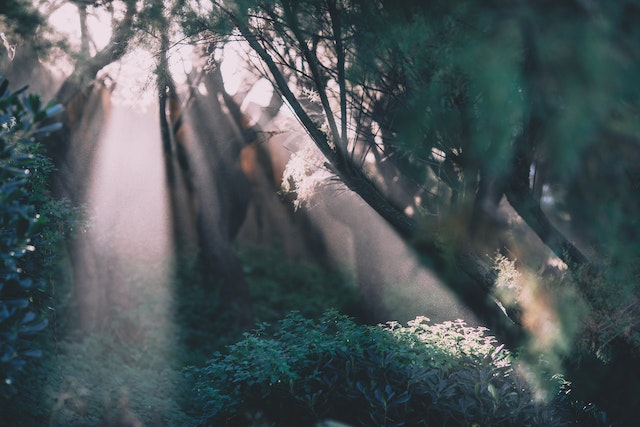Voodoo is an ancient religion that is still practiced by millions of people around the world, particularly in Haiti. It is a religion that is often misunderstood and misrepresented in popular culture. In this blog post, we will explore what Haitian voodoo is and dispel some of the myths surrounding it. We will also explore the role of voodoo in Haitian culture and its importance to the people who practice it.
What is Haitian Voodoo?
Haitian Voodoo, also known as Vodou, is a syncretic religion that originated in the French colony of Saint-Domingue (now Haiti) in the 18th century. It is a blend of Roman Catholic and African beliefs and practices.
Voodoo believers worship a pantheon of gods and goddesses, known as the loa. The most important loa are Bondye (pronounced “bon-jee”), the creator god; Papa Legba (pronounced “leh-bah”), the intermediary between Bondye and humans; and Baron Samedi (pronounced “sah-may-dee”), the lord of death.
Voodoo ceremonies involve music, dance, possession by the loa, animal sacrifice, and offerings of food and drink. Voodoo practitioners believe that they can cure illnesses, summon spirits, cast spells, and cause harm to their enemies through their magical powers.
The Haitian government officially recognized Voodoo as a religion in 2003.
The History of Haitian Voodoo
The roots of Haitian Voodoo can be traced back to the West African country of Dahomey (now Benin). In the 17th and 18th centuries, slaves from Dahomey were brought to Haiti by French colonizers. These slaves brought with them their native religion, which blended with the Catholicism of their colonial masters to create Voodoo.
Haitian Voodoo is a syncretic religion that combines elements of Christianity and West African spiritual traditions. Voodoo believers worship a pantheon of gods and goddesses, known as the loa. The most important loa is Papa Legba, who serves as the intermediary between the human world and the spirit world.
Voodoo ceremonies typically involve music, dancing, and possession by the spirit of a deity. Offerings of food and drink are made to the loa, who may also possess worshippers during ceremonies. Animal sacrifice is also an important part of Haitian Voodoo; chickens and goats are often sacrificed to appease the spirits.
Haitian Voodoo has long been associated with sorcery and black magic. In popular culture, Voodoo is often portrayed as evil or something to be feared. However, Haitian Voodoo is a religion that is practiced by millions of people around the world. It is a rich cultural tradition with a deep history that should be respected.
The Beliefs of Haitian Voodoo
Voodoo is an Afro-Caribbean religion that originated in Haiti. It is a syncretic religion, which means it combines elements of different religions. The main influences on Haitian Voodoo are African, Catholic, and Native American traditions.
Haitian Voodoo beliefs center around the idea of possession. This can be possession by a spirit, or by a loa, which is a kind of deity. Possession is seen as a good thing, because it means that the individual is under the protection of the spirit or loa.
There are many different spirits and loas in Haitian Voodoo. Some of the more popular ones include Legba, who is the guardian of the crossroads; Damballah, the serpent god; and Baron Samedi, the lord of death.
Practitioners of Haitian Voodoo believe in reincarnation and life after death. They also believe in magic and witchcraft, and use these practices to protect themselves from harm and to help others.
Haitian Voodoo Rituals and Practices
Haitian voodoo is a syncretic religion that combines Roman Catholic and African influences. It is similar to other forms of voodoo found in Louisiana and Cuba.
There are many different Haitian voodoo rituals and practices. Some of the most common include:
• Tying knots in a string or cord to symbolically bind or curse someone
• Making dolls out of straw or cloth to represent people (usually enemies) and sticking pins into them
• sacrifice animals, usually chickens, goats or pigs, as offerings to the spirits
• Holding ceremonies at night, often around a bonfire, to communicate with the dead or invoke spirits
Voodoo rituals and practices are often used for evil purposes, such as curses and hexes. However, they can also be used for good, such as healing the sick or bringing rain during a drought.
The dangers of Haitian Voodoo
Haitian Voodoo is a religion that is practiced in Haiti and the Haitian diaspora. It is a syncretic religion, which means it combines elements of Catholicism and African religions.
Voodoo priests, or houngans, perform ceremonies that are intended to bring good luck or fortune, heal the sick, or help the dead move on to the afterlife. However, there are also dark aspects to Haitian Voodoo. Some houngans use their powers to harm others, and some people use Voodoo dolls to curse their enemies.
Haitian Voodoo has been associated with many negative stereotypes, including black magic, Satanism, and cannibalism. While these practices do exist within Haitian Voodoo, they are not representative of the entire religion.
Despite its reputation, Haitian Voodoo is a complex and interesting religion that has helped many people through difficult times. However, it is important to be aware of the dangers associated with it before participating in any ceremonies or activities related to Haitian Voodoo.
Conclusion
Voodoo is an interesting and complex religion that has a long history in Haiti. If you are interested in learning more about Haitian Voodoo, there are many resources available to help you get started. Whether you want to learn about the history of Voodoo or the beliefs and practices associated with it, there is sure to be a resource out there that can help you.

